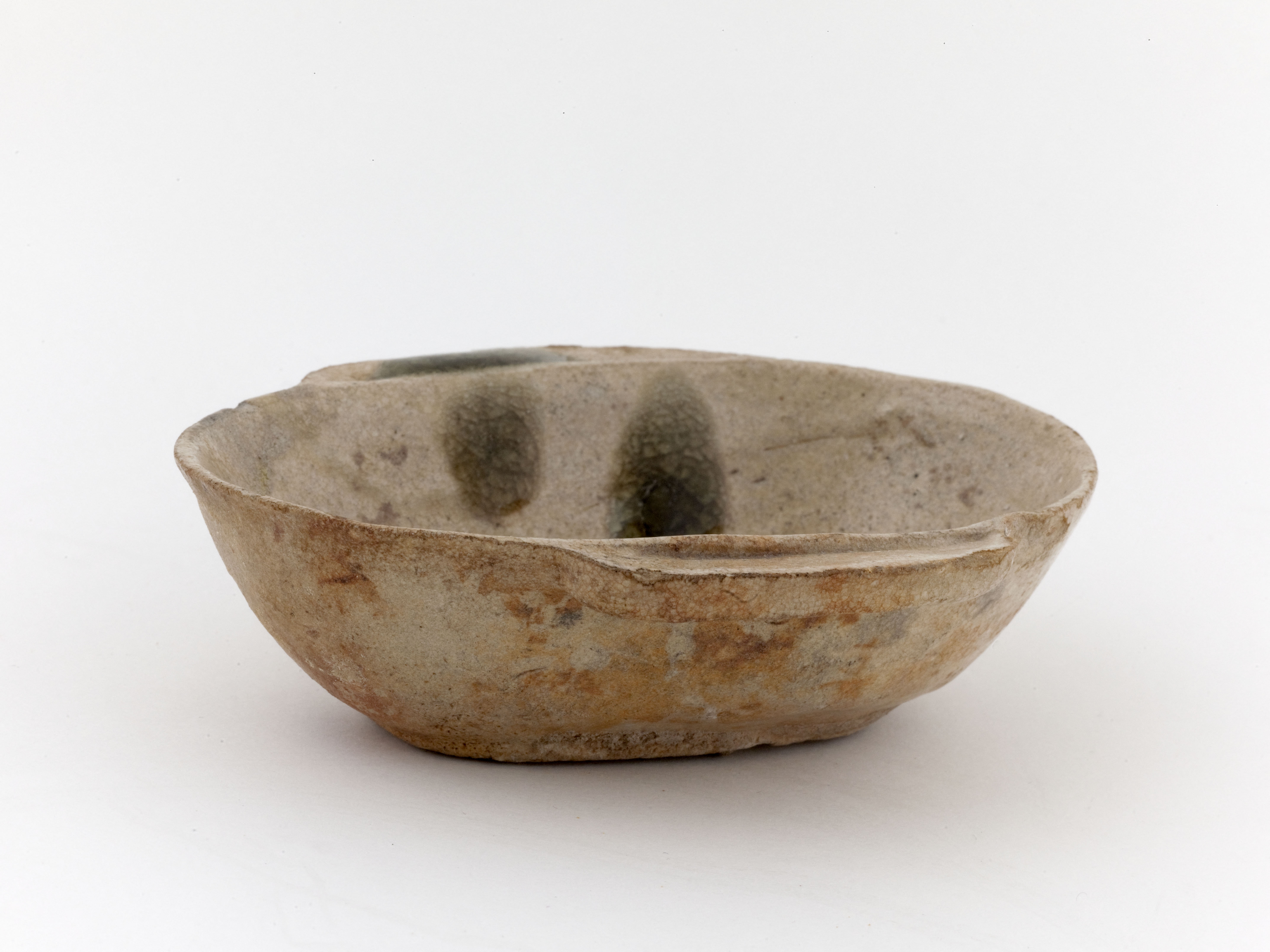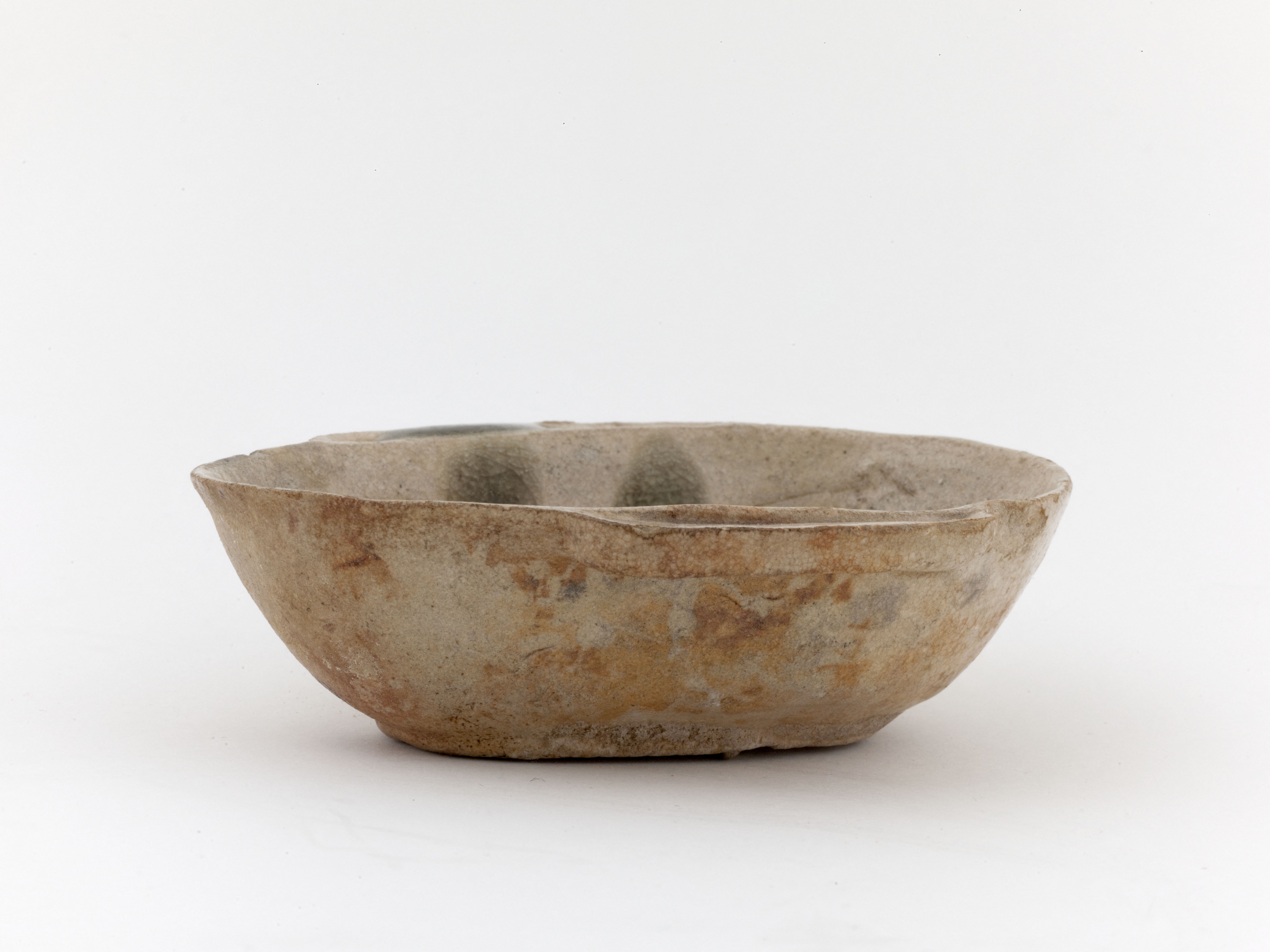
Coupe à oreilles
Terre cuite
Coupe (récipient)
Don fouilles : Mission Janse Indochine (1934-1935)
M.C. 11253
Items placed in the tomb reflected those actually used by the aristocratic classes of the time. But ceramic was used a substitute material, because even if the wealthy alone could afford the luxury of being buried in tombs along with tableware and jars filled with food, certain objects were so luxurious that they were reproduced in clay. This dish with handles, inspired by lacquered wooden dishes that were common in China from the 5th century BC to the 3rd century AD is an example. Tableware in lacquered wood was the most highly prized and expensive, because it was light, smooth to the touch and required months of work for the thin layers of lacquer to dry. Here it is reproduced in white ceramic and in miniature, with a few drips of green enamel splashed dynamically on its surface. Perhaps they serve to conjure up the brilliance of lacquer, silver or bronze. Ancient Chinese texts describe the rules governing funerary practices and recommend using only objects that are different to objects used in the living world.

